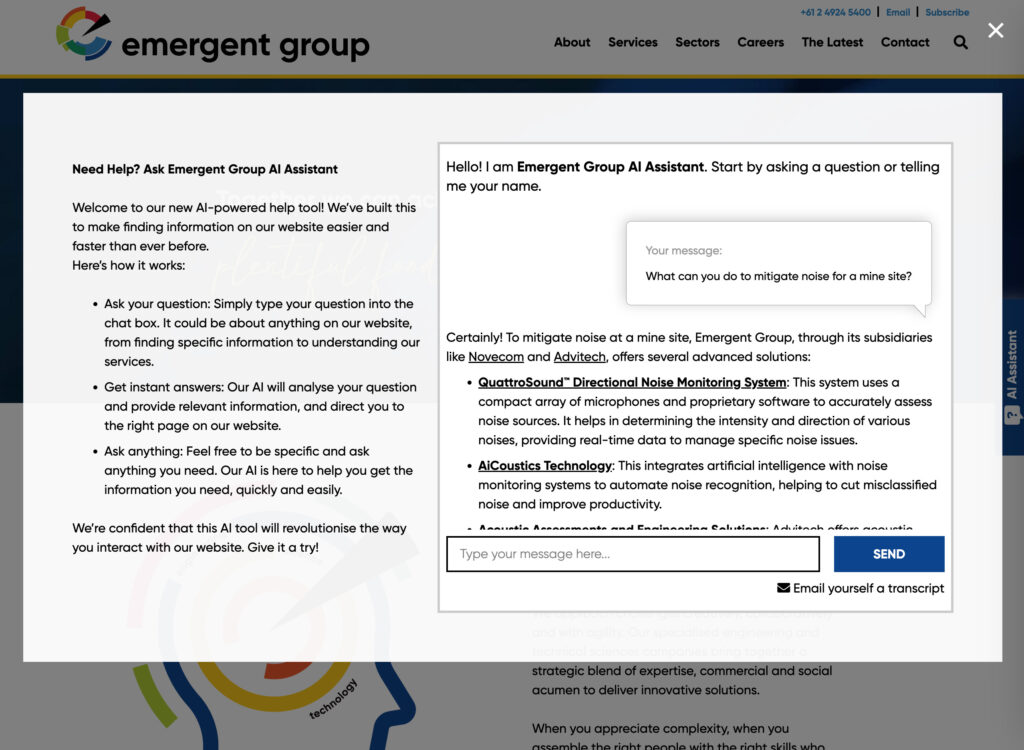Last month I wrote about the importance of the strategy underpinning your website. This is the balancing act between your needs as a business and the needs of your users from your website. The strategy “plane” is the first plane of Jess James Garrett’s Elements of User Experience from his book of the same name. The strategy plane can simply be thought of as the strategy of the website. The next plane is the scope plane which we can think of as the potential of the website.
I want to use the word potential to think about scope for the business as it is more meaningful. The book Elements of User Experience is written primarily for developers, designers, and producers, therefore the language used is very familiar to those kinds of workers, however the business owner is more concerned with what the website can do to fulfil its strategy, than they are with the scope of the project. The scope might appear in the original proposal, but in my experience, this is never thought of once development commences and the site starts to take shape.
It is important however for both the developer and the business to have an equal understanding of the defined requirements that make up the scope. We need to know what we’re building, and what we are not building. For the business owner, you need to know what functions and content you are going to get, and what you are not. Garrett uses this split between functional and content in the model to seperate features and information. This is where the business can begin to ensure that the potential of their website in terms of what it can do for the business and user aligns with the strategic foundation of the objectives of the project for the business and the needs of the user.
The junction of functionality and content is the first area of potential for the business. Obviously, most businesses need a website to convey visual and text information, and for this to be dynamic and adaptable from time to time via frequent content updates. Particularly when used hand-in-hand with a content marketing strategy. So the first potential for a website for the business is one that has an easy-to-use content management system (CMS). The CMS is the first functional requirement in the scope, and the basic potential for the website for the business.
For the business owner the website requirements are either obvious, not as first thought, and unknown. With their strategy in hand the business owner can then start to work with the developers and designers. The business owner will have a clear idea of the potential of the website in terms of obvious requirements. They know what they want, or they have been told what they need by staff and/or customers. Often when working with the developer on ideas to fulfil a requirement, it might be that the a better solution exists, and lastly the developer can provide expertise in what works online that might not have been considered at first. One way we can help business owners understand the potential of their website is through scenario planning and by benchmarking against larger or more successful competitors.
Functional Potential
The business owner should be thinking of functional requirements in terms of potential and what the user can do to make their experience a good one on your website. At the same time, think about what the website can do for you as the business owner in terms of administration, management, and data. Some examples of functions for the user that deliver on the website strategy is as simple as online shopping. For the developer, online shopping results in a scope of work that requires a cart experience, shipping, checkout and payment considerations, and managing limitations and allowances to ensure the user has a great experience and reduces cart abandonment. For the business owner, the ability for the user to buy easily, be tempted by upsells, and have clear shipping and payment gateways is the potential of the website to fulfil a strategy of increasing product sales.
Content Potential
The other half of the potential (or scope) plane is content requirements. Content should be thought of in two ways: format and purpose. The format is whether it is text, images, infographics, video, while purpose is what the content delivers to the user in terms of utility. Like the functional requirements, content requirements can also be approached as either obvious, not as first thought, and unknown. Working with a content writer or developers will help define your content requirements as part of the development scope. It is useful for the business to plan this both before the developer scope, and after to ensure they are aware of who is responsibly for producing the content, how often it needs to be produced, and the structure of the content in terms of delivering on the website strategy. The potential of content on your website is to guide the user to a purchasing or enquiring decision via the functional requirements. So it is important that both are considered in tandem.
What is the potential of your website for your business? Is there anything that you know is missing in terms of functional requirement? Is your website fulfilling your strategy? Would you like to know what experts believe is possible as potential for your website? Get in contact with us today. I would enjoy talking with you about your website strategy, and what potential there is to achieve success online.




